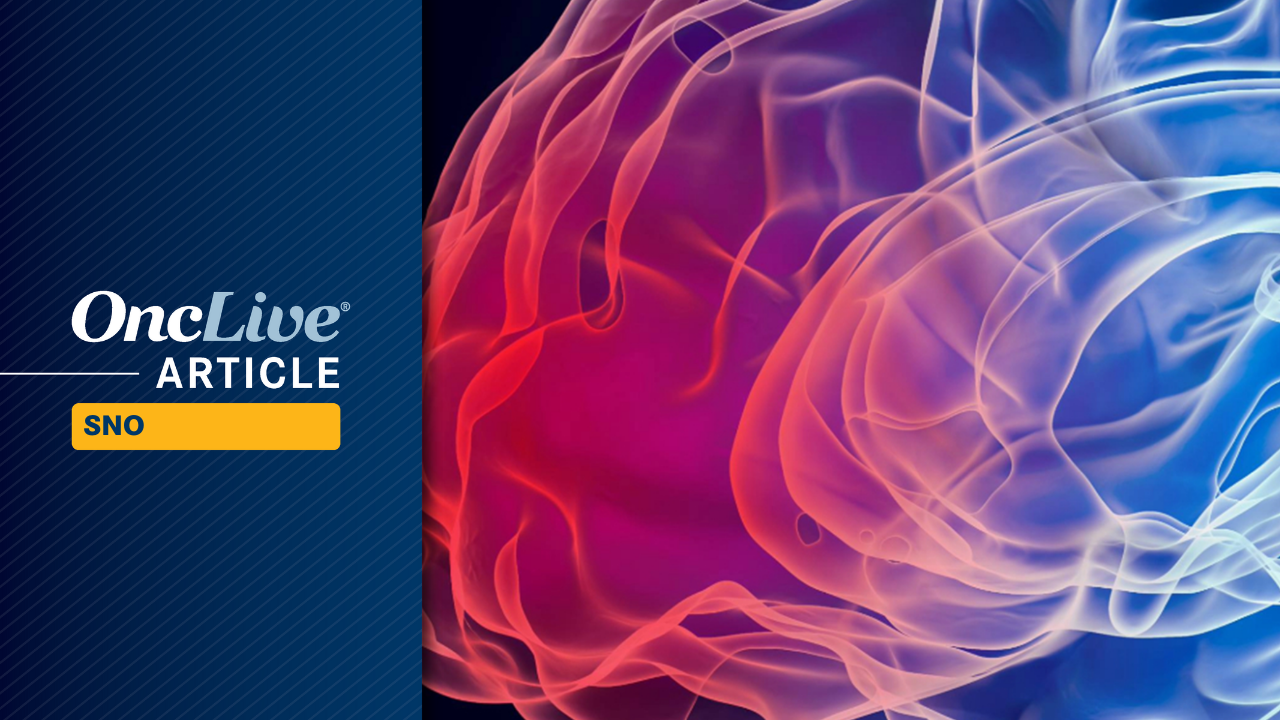Earlier treatment options, such as vorasidenib (Vorangio), could address unmet needs for patients with slow-growing IDH-mutant gliomas, according to real-world data reported in a poster presented during the 2025 Society for Neuro-Oncology Annual Meeting.
In the study, vorasidenib treatments demonstrated minimal toxicity for patients with slow-growing IDH-mutant gliomas researchers have reported— with a treatment approved in 2024 by the FDA, possibly helping to address this issue.
Real-world observation rates and treatment patterns among patients aged 12 years and older with IDH-mutated glioma and their implications for targeted therapy use were reported.
Researchers reported that 5,894 with IDH-mutant glioma were identified, of whom 3,212, or 54%, had grade 2 tumors and 2,682, or 46%, had grade 3 tumors. The median age at diagnosis was 39 (range 31-50) years.
After initial surgery, 2,058 patients were on observation, and 3,660 initiated therapies within 90 days. Of the former group, 1,568 remained on observation until the end of the study period in 2022, while 490 received chemotherapy/radiation after an initial period of observation.
By 90 days after surgery, 70% of patients who were age 40 years or older had initiated therapy, compared with 57% of those aged 12 to 39 years. At 90 days, 43% of patients age 12 to 39 years and 30% of patients age 40 years or older remained on observation, with 34% and approximately 22%, respectively, still on observation after 5 years.
Additionally, by 90 days following surgery, 47% of patients with a grade 2 glioma and 82% of patients with a grade 3 glioma had initiated therapy, and at 90 days 53% of patients with a grade 2 glioma and 18% with a grade 3 glioma remained on observation, with 43% and 10%, respectively, still on observation after 5 years.
“Historical management patterns show that a substantial proportion of patients with [IDH]-mutated glioma were managed with observation, suggesting an unmet need for an effective early intervention,” researchers concluded in their poster presentation of the data. “While younger patients (aged 12 to 39 years) and those with World Health Organization (WHO) grade 2 glioma were more likely to undergo observation, a substantial proportion of patients aged [at least] 40 years and those with WHO grade 3 glioma also underwent observation.”
Researchers further noted that the fact that patients age 40 years and older or those with grade 3 glioma received radiation or chemotherapy, given those treatments’ well-established long-term adverse effects, should highlight the need for less-toxic alternative treatment options.
Vorasidenib, researchers stated in the poster “offers an early, effective, low-toxicity treatment option across these patient groups.”
More Information About Vorasidenib
Vorasidenib was approved the FDA in August 2024 for the treatment of adult and pediatric patients at least 12 years old with grade 2 astrocytoma or oligodendroglioma with a susceptible IDH1 or IDH2 mutation following surgery including biopsy, sub-total resection, or gross total resection. An IDH1 and IDH2 inhibitor, vorasidenib was the first systemic therapy approved by the agency for patients with grade 2 astrocytoma or oligodendroglioma with a susceptible IDH1 or IDH2 mutation, according to a notice from the FDA.
Additionally, longer-term results announced earlier this month showed that vorasidenib continued to benefits patients in this population, according to updated phase 3 INDIGO trial data published in The Lancet Oncology.
At a median follow-up of 20.1 months, patients treated with vorasidenib experienced superior progression-free survival to those who received placebo, with disease progression in 32% of patients who received the drug and 64% of those who did not.
References
- “Real-world observation rates and treatment patterns in IDH-mutated glioma: Implications for targeted therapy use;” Ostrom Q., Bhagnani T., Benedetti J. et al., presented at the 2025 Society for Neuro-Oncology Annual Meeting, Nov. 19 to 23, Honolulu, Hawaii, poster INNV-37.
- “Voranigo Approved by FDA For Astrocytoma or Oligodendroglioma,” CURE, Aug. 6, 2024; https://www.curetoday.com/view/voranigo-approved-by-fda-for-astrocytoma-or-oligodendroglioma
- “Voranigo Continues to Benefit Patients With Grade 2 IDH-Mutated Glioma,” CURE, Nov. 4, 2025; https://www.curetoday.com/view/voranigo-continues-to-benefit-patients-with-grade-2-idh-mutated-glioma
